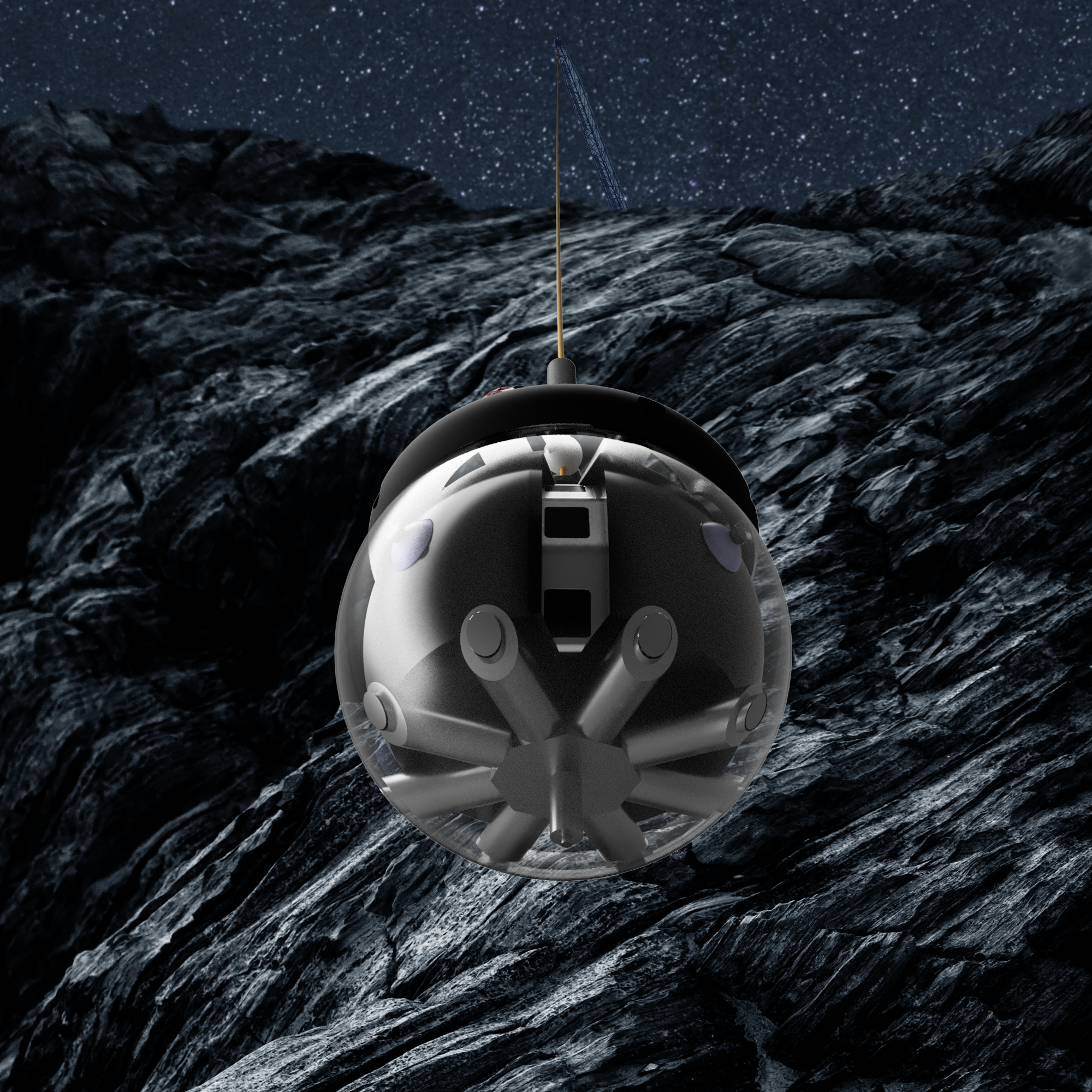

The European Space Agency is working on a prototype of a spherical rover that could explore the depths of lunar caverns. It would be the first mission to delve beneath the surface of another world.
The small craft, called DAEDALUS—for Descent And Exploration in Deep Autonomy of Lunar Underground Structures—would be lowered into caverns from a crane, then set free to roll around autonomously inside.
“Since the robot is equipped with laser scanners and cameras, it could act completely autonomously,” says Dorit Borrmann, a roboticist and member of the DAEDALUS project of the University of Würzburg in Germany. If they take the risk of letting the bot roll on its own, “we might actually get further with the exploration, and then gather more data.”
The rover, which is about a foot and a half in diameter, would be able to map the interior structure of caves by bouncing laser pulses off the walls and seeing with two 360-degree cameras. The prototype is part of a larger series of ESA projects to explore lunar caves.
The subterranean moon is interesting both for geological purposes—like learning how the moon formed—and for practical concerns of future astronauts. The moon’s surface is unprotected from cosmic radiation, micrometeorites, and extreme temperatures, but caves could help shelter astronauts or future lunar settlers from these threats. Some of them may even have water ice hiding in their shadows.
Julie Stopar, a planetary scientist who studies the geology and evolution of the lunar surface at the Lunar and Planetary Institute and wasn’t involved in the DAEDALUS project, says she’s excited to see new innovative designs like this one. They could allow rovers to explore interesting places previously out of our reach. Subterranean missions could study the different layers of rock inside caves and find ancient gases from the lava flows preserved as minerals, Stopar says—providing further insight into the moon’s history.
But she’s not quite convinced that lava tubes will provide a useful bunker for astronauts anytime soon. Many of the caves have steep entrances hundreds of feet high, which would be difficult for humans to traverse. She also says caves far from the poles would be warmer and probably won’t hold onto water ice in quantities that are useful for humans.
The lava caves DAEDALUS would explore formed billions of years ago, Stopar says. This was after the major, asteroid-sized rock impacts on the moon had created its basins—the dark, sunken regions on the face of the moon—but it was still “a really volcanically busy time,” she says.
Having been in a lava tube on Earth, Stopar says, “sometimes they’re easy to walk through,” but other times they’re full of debris, which could be challenging for the rover.
The rover ideas came from a crowdsourcing effort in 2019, when the European Space Agency asked for lunar cave exploration ideas. The rover and the crane to lower it were two of the ideas ESA chose to explore in depth. After a recent four-week feasibility study, the team has tentative plans to explore the moon’s Marius Hills—a region with caverns which have been imaged from space—around the year 2033. Still, the finer points of the design and mission are still up in the air.
The inside of the rover would have an array of sensors and locomotion equipment protected by a strong, transparent shell. That’s especially important for keeping out pesky lunar dust which would wreak havoc on the instruments. It would move by shifting its center of mass inside the shell to unbalance the ball, making it roll in the desired direction—not unlike a hamster inside a ball. If it gets stuck, one of 16 rods can extend from its surface and pop the ball over obstacles.
At present, one of the biggest open questions in the design, Borrmann says, is what the shell will be made from. They need to find or design a material that will protect the interior from impacts and won’t get scuffed by rocks or sharp lunar dust grains so that the cameras can keep a clear view.
For this task, the spherical design beats more conventional legs or wheels because driving or walking down a steep lunar pit would be extremely dangerous, Borrmann says. And if they lowered a conventional robot down, its protruding bits might get snagged on rock. The rover will take in much of its data by scanning its surroundings as it descends into the cavern, so that even if, worst case, it can’t move on the cavern floor, it still gets a decent idea of the composition and layout of the cave. It would be able to not only make a 3D map of the cave, but also analyze the light spectra coming off the rock to determine its composition.
All this information will be helpful to scientists who, at present, have little knowledge about what’s inside.
